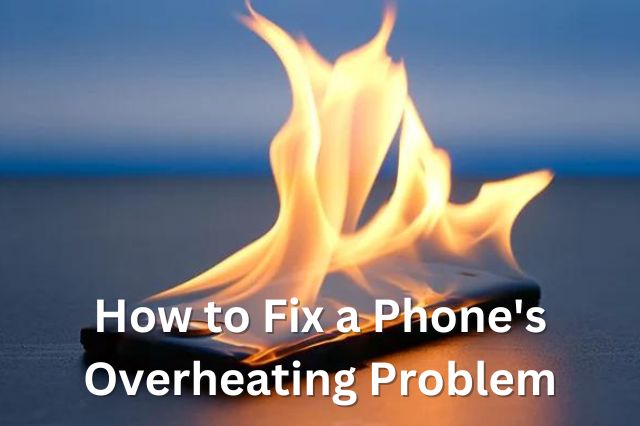In today’s fast-paced digital world, smartphones are indispensable. They connect us to information, entertainment, and each other. However, like any electronic device, smartphones can suffer from overheating, which can be a nuisance and potentially harmful. Understanding why your phone overheats and how to prevent and fix this issue can help ensure its longevity and smooth operation. This article will explore the causes of phone overheating, its consequences, and effective solutions to keep your device cool.
Causes of Phone Overheating
Several factors can contribute to a phone overheating. Understanding these causes is the first step in addressing the problem.
- Intensive Usage: Prolonged use of resource-heavy applications like gaming, streaming videos, or using GPS can cause the phone’s processor to work harder and generate more heat.
- Environmental Factors: Exposure to high ambient temperatures, direct sunlight, or leaving the phone in a hot car can significantly increase the device’s temperature.
- Background Processes: Numerous apps running in the background can overburden the CPU and RAM, leading to overheating.
- Software Issues: Bugs or glitches in the operating system or apps can cause the processor to overwork and generate excess heat.
- Hardware Problems: Faulty batteries, defective chargers, or internal components can cause overheating. This is especially true for older devices where wear and tear can degrade performance.
- Poor Ventilation: Using the phone with a heavy, non-breathable case can trap heat, preventing it from dissipating effectively.
Consequences of Overheating
Overheating is not just uncomfortable; it can have serious implications for your device:
- Battery Damage: Excessive heat can degrade the battery, reducing its lifespan and performance.
- Throttling: To prevent damage, the phone may throttle (slow down) its performance, leading to lag and slow response times.
- Hardware Damage: Persistent overheating can damage internal components like the processor, motherboard, and screen.
- Data Loss: In extreme cases, overheating can cause the phone to shut down suddenly, leading to potential data loss or corruption.
- Physical Harm: Although rare, severe overheating can lead to battery swelling or even explosions, posing a risk to personal safety.
Solutions to Prevent and Fix Overheating
Addressing phone overheating involves both preventive measures and immediate fixes when the device gets too hot. Here’s a comprehensive guide:
- Optimize Usage Habits
- Limit Intensive Tasks: Avoid using heavy applications for prolonged periods. Take breaks to allow the phone to cool down.
- Close Background Apps: Regularly close apps running in the background to reduce the load on the processor.
- Lower Screen Brightness: High screen brightness can generate additional heat. Use adaptive brightness or lower the screen brightness manually.
- Enable Battery Saver Mode: This mode optimizes performance and reduces unnecessary processes, helping to keep the phone cool.
- Keep Software Up to Date
- Update Apps and OS: Ensure all apps and the operating system are updated to the latest versions. Developers often release updates that fix bugs and optimize performance.
- Uninstall Unnecessary Apps: Remove apps you no longer use to free up resources and reduce background processes.
- Improve Ventilation
- Remove Phone Case: If you notice the phone getting hot, remove the case to allow better heat dissipation.
- Avoid Direct Sunlight: Keep the phone out of direct sunlight and away from heat sources.
- Use a Cooling Pad: For extended use, especially during gaming or video streaming, consider using a cooling pad designed for phones.
- Manage Battery and Charging
- Use Official Chargers: Use chargers and cables from the phone’s manufacturer to ensure proper power management.
- Avoid Overcharging: Disconnect the phone once it’s fully charged to prevent excess heat from continuous charging.
- Charge in a Cool Environment: Charge the phone in a well-ventilated area away from heat sources.
- Enable Smart Features
- Adaptive Battery: Many modern smartphones have adaptive battery features that learn your usage patterns and optimize battery usage.
- Performance Modes: Some phones offer performance modes that balance power and performance, helping to keep the device cool.
- Check for Hardware Issues
- Inspect Battery Health: Check the battery’s health through the phone’s settings. If the battery is degraded, consider getting it replaced.
- Service the Phone: If you suspect hardware issues, take the phone to an authorized service center for inspection and repair.
- Use Specialized Apps
- Cooling Apps: Some apps are designed to help manage the phone’s temperature by controlling background processes and optimizing performance.
- Monitoring Apps: Use apps that monitor the phone’s temperature and alert you when it gets too hot.
- Reset and Restore
- Soft Reset: Sometimes, a simple restart can resolve minor software issues causing overheating.
- Factory Reset: If the overheating persists, consider performing a factory reset to eliminate software problems. Ensure you back up your data before doing this.
Long-Term Maintenance Tips
- Regular Cleaning: Dust and debris can clog the phone’s vents and ports, reducing its ability to dissipate heat. Clean your phone regularly with a soft cloth and compressed air.
- Avoid Overloading Storage: Keep your phone’s storage below 80% capacity to ensure it operates efficiently. Overloaded storage can cause the device to work harder and generate more heat.
- Use Genuine Accessories: Always use accessories recommended by the manufacturer. Low-quality or incompatible accessories can cause overheating and other issues.
- Monitor App Permissions: Some apps may request unnecessary permissions, causing them to run in the background and overuse resources. Regularly review and adjust app permissions.
- Educate Yourself: Stay informed about best practices for phone maintenance and usage.
Conclusion
Phone overheating is a common problem, but it can be managed effectively with the right strategies. By understanding the causes of overheating and implementing preventive measures, you can keep your phone running smoothly and extend its lifespan. Regular maintenance, mindful usage, and staying updated with software and hardware care are key to avoiding overheating issues. Remember, a well-maintained phone performs better and provides a safer and more enjoyable user experience.

